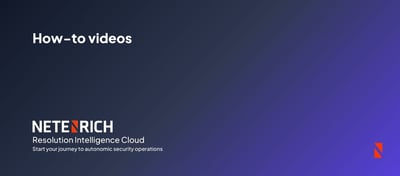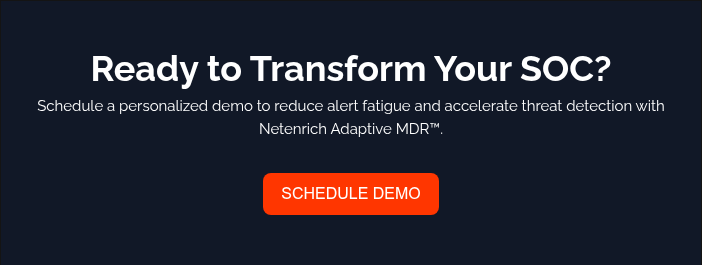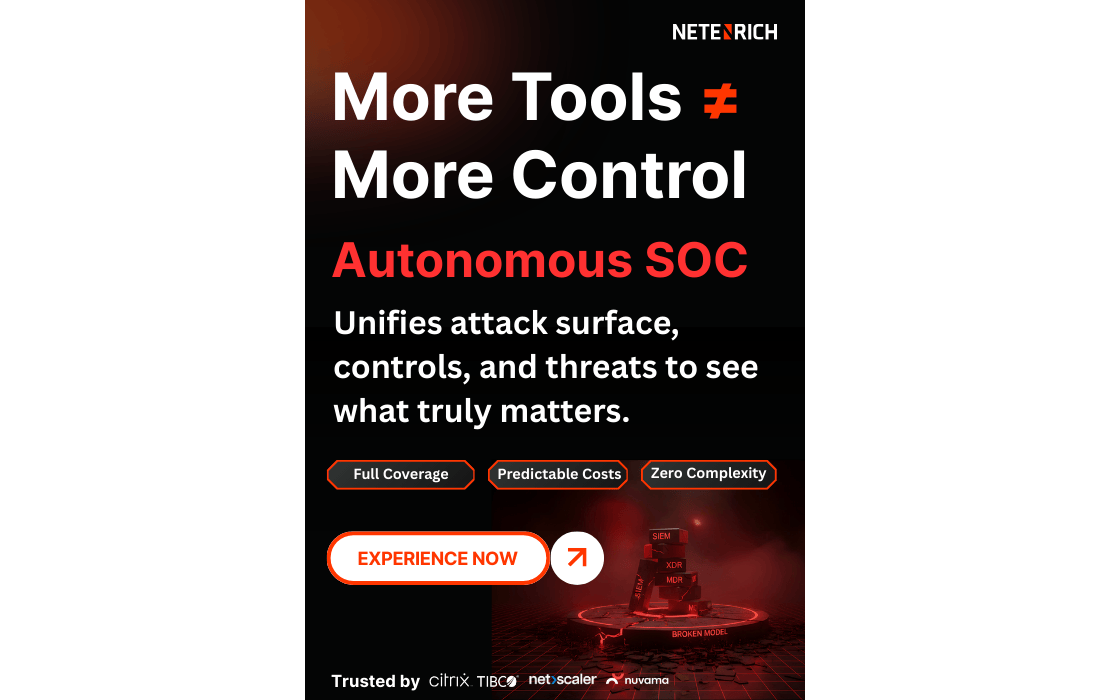Top 5 SOC Best Practices to Overcome Modern SOC Challenges
Published on August 22, 2025 | Last updated on December 18, 2025 | 4 min read

Key Takeaways
- Alert fatigue and manual triage remain the top SOC challenges.
- AI-driven SOC solutions turn noise into context, accelerating detection and response.
- Cloud-native SOC best practices enable scale, compliance, and resilience.
- Proactive SOC strategies shift defense from reactive firefighting to outcome-driven security.
Modern SOC Challenges in 2025
Security Operations Centers (SOCs) were designed for yesterday’s threats. In 2025, leaders face new realities:
- Alert fatigue: SOCs process over 100,000 alerts daily; many never get investigated.
- Siloed architectures: Fragmented tools and workflows create dangerous blind spots.
- Cloud complexity: Hybrid and multi-cloud adoption multiplies attack surfaces.
The numbers speak for themselves:
- Data breaches rose 72% between 2021 - 2023, setting back-to-back records
- The average cost of a breach in 2024 hit $4.88M, the highest ever recorded.
As highlighted in recent Netenrich CISO Roundtables, the traditional SOC is reaching a breaking point. Leaders are realizing that SecOps must evolve from tool-driven workflows to data-driven, outcome-oriented security strategies.At the core, SOC challenges are data challenges: fragmented, noisy, and incomplete. The future of security isn’t about adding more tools; it’s about engineering better data pipelines that AI can amplify into faster, smarter outcomes.
SOC Best Practice 1: Make Alerts Work for You, Not Against You
Where SOCs Fail
Most SOCs treat alert noise as the enemy. But buried in the “noise” are often the first faint signs of compromise. The challenge isn’t fewer alerts - it’s better signals.
How CISOs Solve It:
- Expand the scope of data you ingest, then let AI enrich it.
- Correlate telemetry from endpoints, cloud, and identity sources.
- Elevate the Signal-to-Noise Ratio (SNR) so analysts see context, not chaos.
Think of it like airport security: not every beep at the scanner is dangerous, but you need a system smart enough to know when to pull someone aside.
With Netenrich Adaptive MDR Services, SOCs amplify meaningful signals and contextualize them in real time, ensuring critical threats don’t disappear in the static.
SOC Best Practice 2: Measure SOC Efficacy, Not Activity
Where SOCs Fail
Too many SOCs chase KPIs that don’t matter - number of tickets closed, SLAs met - while missing the bigger picture: did we prevent business disruption?
Attendees at Netenrich’s recent CXO/CISO Roundtable agreed, “SOCs are failing because they focus on reacting to incidents rather than proactively mitigating risks. They need to shift left and address threats earlier in the kill chain.”
How CISOs Solve It
- Unify your data pipelines. Stop bolting tools together.
- Engineer for efficacy. Measure by reduced breach impact, not ticket volume.
- Adopt continuous improvement. AI/ML should evolve with the threat landscape.
Outcome-driven SOCs shift the conversation from “how busy are we?” to “how safe are we?”Only when SOCs unify their data pipelines can they measure what truly matters: reduced breach impact, regulatory resilience, and board-level assurance.
Adaptive MDR™ does this by engineering data, detection, and response together so leaders can demonstrate resilience to boards and regulators.
SOC Best Practice 3: Secure the Cloud Without Blind Spots
Where SOCs Fail
Hybrid and multi-cloud adoption is now the rule, not the exception. Unfortunately, most SOCs still monitor them with siloed, legacy workflows. According to Radware, 69% of companies that have multi-cloud architectures have reported data breaches.
Gartner predicts that by 2025, more than 85% of organizations will have adopted a cloud-first strategy, but 99% of cloud security failures will be the customer’s fault.
How CISOs Solve It
- Building entity-aware, cloud-native data pipelines that unify telemetry across endpoints, identity, and multi-cloud workloads.
- Leveraging Google Cloud SecOps + AI for scale and speed.
- Partnering with providers who can unify on-prem + cloud telemetry.
Netenrich’s partnership with Google Cloud brings this together, powering Adaptive MDR™ with SecLMs and advanced AI to strengthen defenses across the MITRE ATT&CK framework.
SOC Best Practice 4: Adopting Proactive Models to Address New-Age Threats
Where SOCs Fail
Every major breach report has the same theme: attackers were inside for weeks - sometimes months - before discovery as evidenced by the 2020 U.S. Federal Government breach*, wherein attackers gathered intelligence for months before executing data exfiltration.This reactive approach compromises security and undermines long-term resilience, especially with limited data retention often capped at three months, making it difficult to detect long-term threats involving lateral movement or dormancy.
How CISOs Solve It
- Extend data retention to spot long-dwell attacks.
- Automate prioritization (Likelihood + Impact + Confidence).
- Treat SOC data as a strategic asset, not a compliance checkbox.
Extending data retention isn’t just about storage, it’s about enabling long-horizon analytics. Historical, engineered data lets AI surface dormant or lateral threats that would otherwise be invisible.
With Adaptive MDR Solutions, organizations move left in the kill chain - catching threats early and focusing human talent on the issues that matter.
SOC Best Practice 5: Solving Manual Process Bottlenecks
Where SOCs Fail
Manual triage workflows in cybersecurity create bottlenecks. Without automation, security analysts must review, prioritize, and investigate alerts while sifting through high volumes of security notifications, identifying false positives, and determining real threats. This process is time-consuming, prone to human error, and slows response times, often leading to alert fatigue and missed critical threats.
As cyberattacks grow more sophisticated, manual triage becomes unsustainable. Also, as organizations adopt more complex technology infrastructures, the limitations of manual processes become even more apparent.
How CISOs Solve It
- Reduce triage cycles from hours to under 15 minutes.
- Shrink alert volumes from 100,000/week to <10 critical cases.
- Free analysts to focus on threat hunting and strategy.
AI isn’t here to replace humans - it’s a co-pilot. Routine tasks get automated so your experts can focus on judgment calls and strategic outcomes.
Netenrich’s Data-Driven SecOps and ActOns framework make this shift real, delivering prioritized recommendations CISOs can trust.
Move Forward: Stop Firefighting. Start Driving Outcomes
Boards don’t ask how many alerts your SOC processed last quarter. They ask how secure the business is.
By adopting modern SOC strategies - signal enrichment, AI augmentation, cloud resilience, proactive hunting, and automation - CISOs can finally answer with confidence.
If your SOC is stuck in the past - reactive, ineffective, and low-performing - it’s time to move forward.
Stop firefighting. Start making your data work for you. With Adaptive MDR, engineered data pipelines fuel AI, automation, and analyst expertise, so you drive measurable outcomes, not just activity.
FAQs
1. What are the top SOC best practices for 2025?
The top SOC best practices include reducing alert fatigue, integrating AI-driven insights, strengthening cloud security, adopting proactive detection models, and automating manual triage.
2. What are the biggest SOC challenges today?
Key SOC challenges include alert overload, cloud complexity, siloed tools, high data breach costs, and reliance on manual triage workflows.
3. How do AI and automation improve SOC solutions?
AI enhances SOC solutions by contextualizing alerts, detecting anomalies in real time, and automating investigations, allowing analysts to focus on high-priority threats.
4. What’s the difference between SOC strategies and SOC solutions?
SOC strategies are the overarching approaches (like proactive detection models), while SOC solutions are the tools and frameworks (like AI-driven SecOps platforms) that enable those strategies.
*Sources:
- Forbes, Cybersecurity Stats: Facts And Figures You Should Know,August 2024
- IBM, Cost of a Data Breach, 2024
- The Hacker News, AI SOC Analysts: Propelling SecOps into the future, January 2025
- Strongdm, 40+ Alarming Cloud Security Statistics for 2025, January, 2025
- Gartner, Gartner Says 70% of Organizations Will Shift Their Focus From Big to Small and Wide Data By 2025, May, 2021
- Gartner, There Will Never Be an Autonomous SOC, March, 2025
- ITBrief, How SecOps can leverage AI and automation for faster, smarter incident management, November 2024
- DW, US government confirms 'significant' hack, December 2020
Related Articles
Subscribe for updates
The best source of information for Security, Networks, Cloud, and ITOps best practices. Join us.








